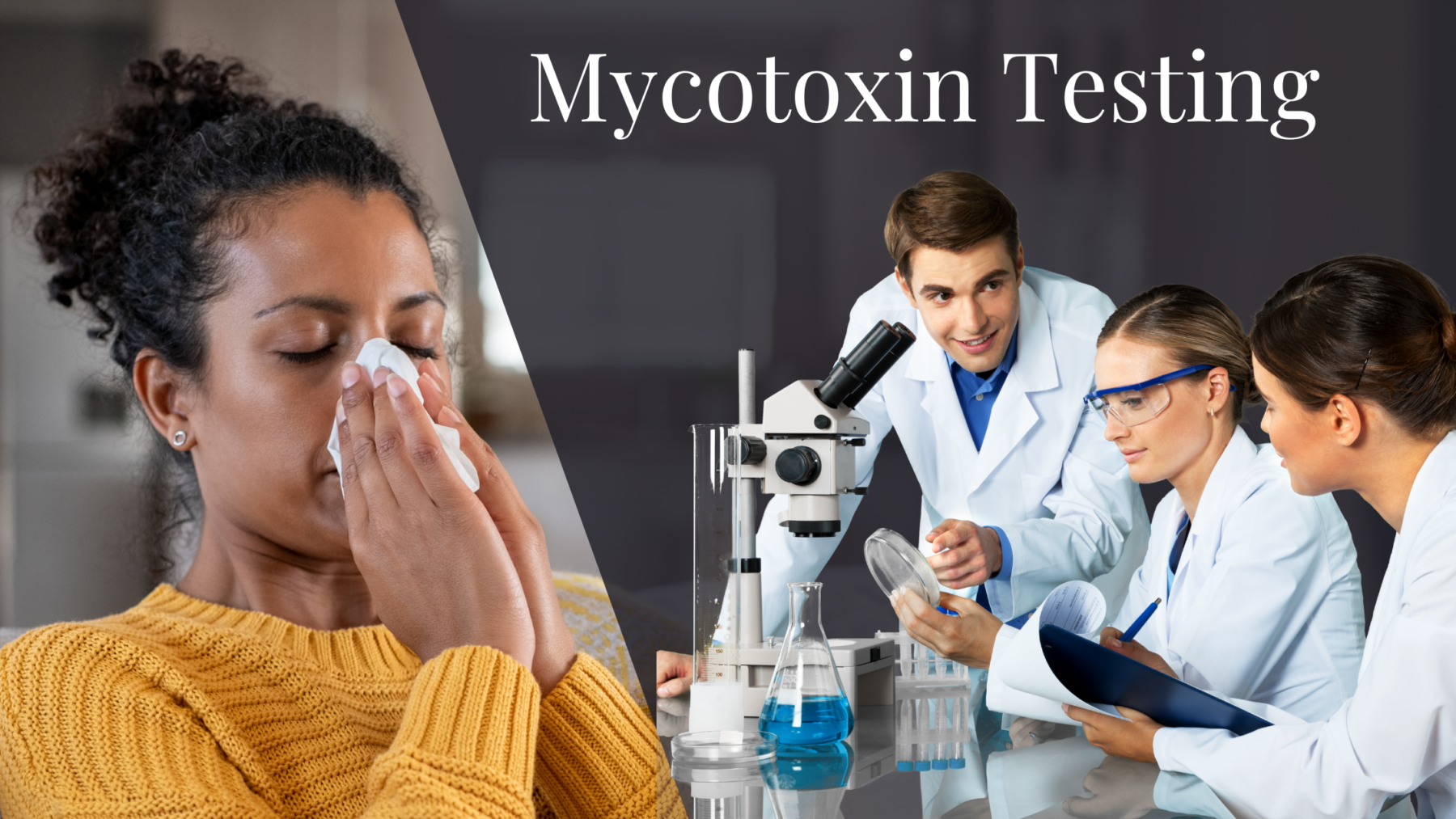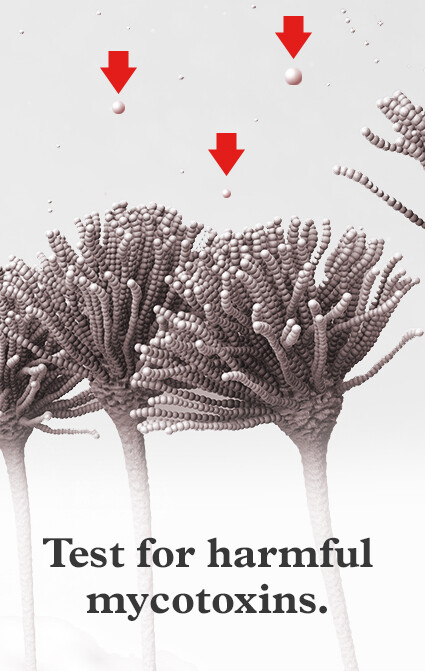Selecting the Right Mycotoxin testing Services for Your Company
Selecting the Right Mycotoxin testing Services for Your Company
Blog Article
Exactly How Mycotoxin Screening Helps Avoid Contamination and Protect Food Materials

Mycotoxin screening is an important practice in the food sector, offering as a frontline defense against contamination by unsafe toxins created by mold and mildews. Via the application of sophisticated methods like High-Performance Fluid Chromatography (HPLC) and Fluid Chromatography-Mass Spectrometry (LC-MS), food manufacturers can accurately discover and measure mycotoxin levels in agricultural products.
Comprehending Mycotoxins
Comprehending mycotoxins begins with acknowledging that they are hazardous additional metabolites created by specific mold and mildews, which can pollute agricultural products. These metabolites are not vital for the growth or reproduction of the fungi but can have severe effects for animal and human wellness. Mycotoxins are generally located in staple crops such as corn, wheat, barley, and nuts, where they can proliferate under specific conditions of dampness and temperature level.
There are numerous kinds of mycotoxins, each created by different fungal species. Fusarium types produce fumonisins and trichothecenes, both of which are connected with various intense and persistent health concerns.

Threats of Mycotoxin Contamination
The dangers of mycotoxin contamination are diverse, positioning substantial threats to both food safety and security and public health and wellness. Mycotoxins, poisonous compounds generated by specific kinds of fungi, can infect a wide array of agricultural items including grains, nuts, flavors, dried out fruits, and coffee.
Economic effects are another major problem. Contaminated plants can cause considerable financial losses for farmers and food manufacturers due to decreased returns and the need for expensive purification measures. Worldwide trade can be dramatically hindered as countries impose stringent mycotoxin laws to shield their populations, leading to declined shipments and stretched profession relations.
Environmental elements such as climate modification worsen the threat of mycotoxin contamination. Variants in temperature level and moisture can develop beneficial conditions for fungal growth, boosting the probability of contamination occasions. Therefore, understanding and alleviating these threats are critical for ensuring the safety and integrity of global food supplies.
Methods of Mycotoxin Testing
Accurately identifying mycotoxin contamination in farming items is necessary for guarding public wellness and preserving food security requirements. Different techniques are employed to spot and quantify mycotoxins, each offering details benefits and restrictions.
High-Performance Liquid Chromatography (HPLC) is a widely made use of technique because of its high sensitivity and accuracy. It includes separating mycotoxins from other materials in a sample, enabling exact metrology. Fluid Chromatography-Mass Spectrometry (LC-MS) integrates liquid chromatography with mass spectrometry to give comprehensive molecular information, making it specifically helpful for recognizing several mycotoxins simultaneously.

Gas Chromatography-Mass Spectrometry (GC-MS) and Thin-Layer Chromatography (TENDER LOVING CARE) are additionally used, each with one-of-a-kind applications. GC-MS is reliable for unpredictable mycotoxins, while tender loving care uses an easier, economical Read More Here option for preliminary testing.
Advantages of Routine Evaluating
Regular testing for mycotoxins in farming items uses many benefits, considerably contributing to public wellness and food safety and security. By determining contamination early, regular testing helps protect against the circulation of harmful foods, thereby decreasing the threat of mycotoxin-related ailments among consumers. This aggressive technique not only safeguards human wellness however likewise improves the total top quality of food products.
Various nations and regions have actually developed strict limitations for mycotoxin levels in food and feed. Sticking to these restrictions through routine screening makes certain that producers and vendors meet legal requirements, therefore preventing fines and profession obstacles.
Additionally, routine mycotoxin testing can cause substantial financial advantages. Early detection of contamination permits timely intervention, minimizing possible losses from prevalent contamination. Implementing regular testing procedures can likewise lessen recall expenses and associated obligations, which can be monetarily ravaging.
Additionally, routine testing offers important data that can inform better agricultural practices and storage problems. By recognizing patterns of contamination, manufacturers can embrace safety nets, thus adding and lowering future threats to the sustainability of the food supply chain.
Carrying Out Checking Procedures
Executing effective mycotoxin screening methods is critical for ensuring the safety and security and top quality of agricultural products. Developing a address durable testing structure includes several key actions, beginning with the identification of possible contamination points within the manufacturing and supply chain. This consists of pre-harvest, post-harvest, storage, and circulation stages. Each phase has to be inspected to pinpoint where mycotoxin contamination is most likely to why not try this out take place.
As soon as important control points are recognized, choosing ideal testing approaches is crucial. Typical techniques consist of enzyme-linked immunosorbent assay (ELISA), high-performance liquid chromatography (HPLC), and mass spectrometry (MS) Each technique has its strengths and weak points; thus, selecting the right one depends upon the details mycotoxin being evaluated, the called for sensitivity, and readily available resources.

Lastly, incorporating the testing methods into a comprehensive food safety and security monitoring system is recommended. This enhances traceability and makes it possible for quick restorative activities when contamination is found, consequently protecting the integrity of the food supply chain.
Verdict
Mycotoxin screening is important in preventing contamination and guarding food materials by allowing early discovery of damaging toxins generated by molds in farming products. Advanced approaches such as HPLC and LC-MS guarantee conformity with safety laws and shield consumers from wellness dangers. Normal screening enhances brand name track record, monetary security, and rely on food security by minimizing contamination-related losses and preserving high standards in food production. Applying strenuous testing methods is thus imperative for the market's total health.
Mycotoxin testing is an indispensable method in the food sector, offering as a frontline defense versus contamination by dangerous toxins generated by molds. An incorporated approach including farming techniques, storage space administration, and regular screening can alleviate the threats linked with mycotoxin contamination, guaranteeing food safety and public health.
The risks of mycotoxin contamination are multifaceted, positioning considerable threats to both food safety and public health.Normal screening for mycotoxins in farming items provides many benefits, dramatically adding to public health and wellness and food security.Mycotoxin testing is essential in protecting against contamination and securing food supplies by allowing early detection of unsafe contaminants created by mold and mildews in agricultural items.
Report this page